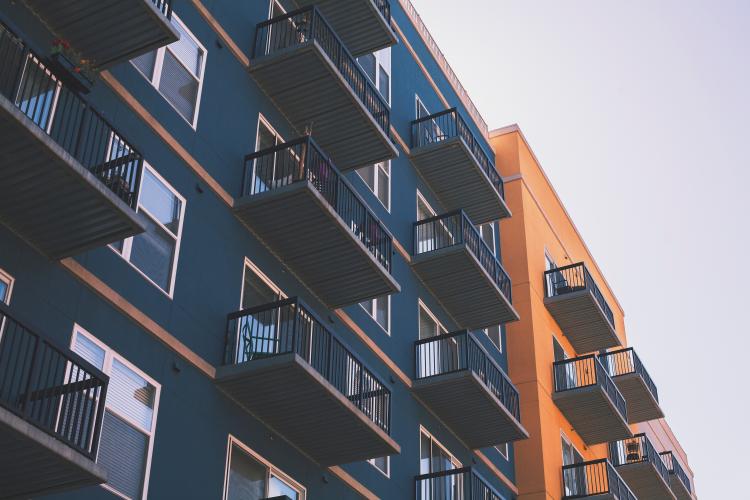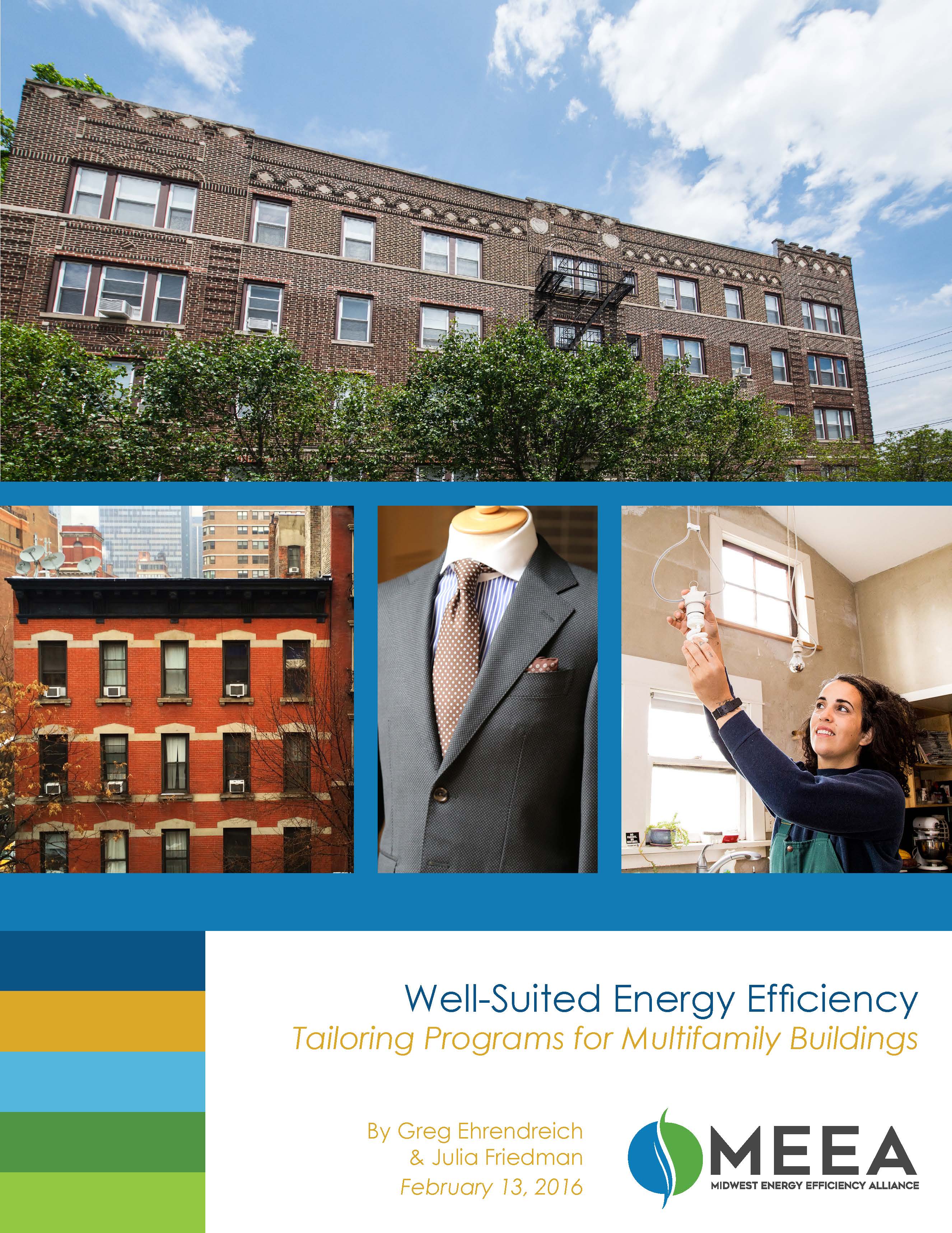
Multifamily housing is a substantial portion of the housing stock in Midwestern states, making up 11-22% of the housing market, depending on the state. Energy efficiency for multifamily housing seems like a sure bet. Estimates show possible energy savings in multifamily affordable housing as high as 22-31%. Nevertheless, there are significant barriers in the way of achieving those savings. A combination of program design and policy approaches can overcome these challenges.
Bridging Theory and Practice
Given the number of recent papers about multifamily efficiency, we were interested in whether these approaches for reaching more multifamily buildings with energy efficiency are making their way from theory to practice in the Midwest. MEEA’s latest report, Well-Suited Energy Efficiency: Tailoring Programs for Multifamily Buildings , analyzes the trends in multifamily building energy efficiency programs in Indiana, Iowa, Minnesota, and Ohio. We chose these states for a couple of reasons: first, utility reports from those states had sufficient program-level data to enable our analysis; and second, they provided an interesting mixture of policy environments. Iowa and Minnesota are states with long experience in energy efficiency with stable, long-term energy efficiency policies. Indiana and Ohio, on the other hand, adopted strong energy efficiency policies less than a decade ago but have had subsequent changes that eliminated or weakened those policies.
We classified the multifamily (MF) energy efficiency programs offered by the investor-owned utilities in the four states as being “MF-Inclusive” – programs that include multifamily as one of a number of eligible customer types – or “MF-Exclusive” – programs that are targeted at multifamily as the only eligible customer type. We then classified these programs further as to whether the programs were Residential (providing EE measures inside the residential unit), Commercial (providing EE for building common areas, Low-Income (specifically targeting low-income customers), or Cross-Sector (providing EE measures in both residential and common areas of the building).
What We Found
What we found was generally encouraging. Our analysis shows that:
- There is a gradual shift toward MF-Exclusive programs, and these programs are growing as a percentage of total energy efficiency portfolios.
- MF-Exclusive programs account for 1.3–6.0% of annual electric energy efficiency spending and provide 0.3–2.9% of annual electricity savings.
- MF-Exclusive programs account for 2.3–4.1% of annual natural gas energy efficiency spending and provide 1.4–3.6% of annual natural gas savings.
- Multifamily customers make up about 8 to 12 percent of participants in MF-Inclusive programs (based on very limited data).
- The proportion of spending on multifamily programs compared to the total spending on all energy efficiency programs is substantially lower than the proportion of multifamily to single-family housing, though it is generally rising.
- The shift toward MF-Exclusive programs and the growth of multifamily programs as a component of energy efficiency portfolios is strengthened by a stable, long-term energy efficiency policy environment, where programs can mature over time and be tailored based on performance and evaluation over successive program cycles.
 Dive Deeper with our New Whitepaper
Dive Deeper with our New Whitepaper
We are making progress on getting a better fit between energy efficiency programs and multifamily customers, but we aren’t all the way there yet. Leading utilities in the region are tailoring their programs to multifamily customers and working to close the gap. The proportion of multifamily housing in the market is still higher than the proportion of multifamily energy efficiency in portfolios; however, the trend in the states we studied shows that utilities are trying to reach multifamily customers with programs that seek deeper energy savings for these customers.
Read the paper for our recommendations to drive greater savings in the multifamily sector.